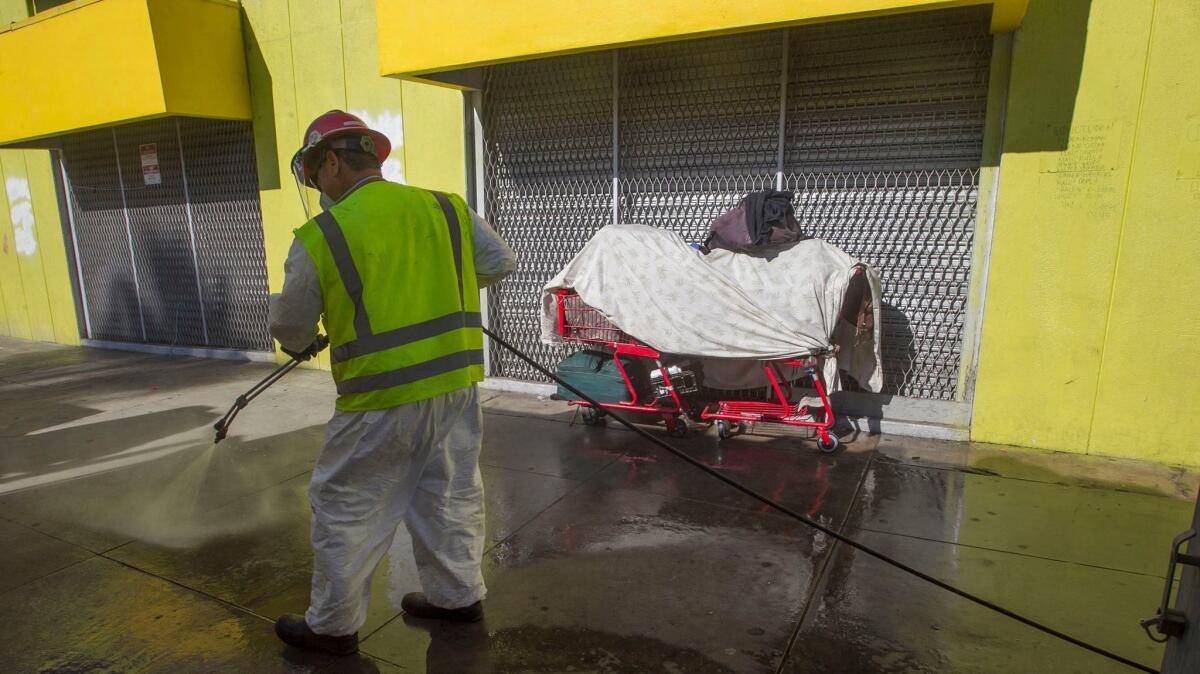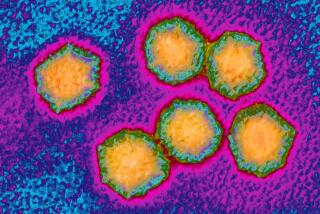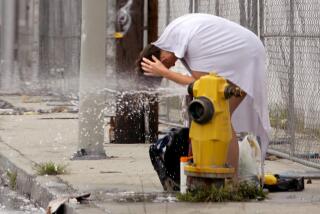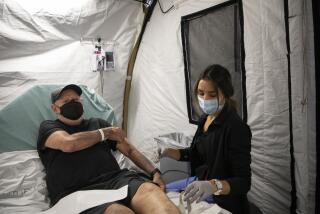Death toll from San Diego hepatitis outbreak rises to 16, with 292 people hospitalized

- Share via
San Diego County’s hepatitis A outbreak shows no signs of slowing, according to the latest update released Tuesday by the county Health and Human Services Agency.
The outbreak’s death total rose to 16 — one more than last week’s total. The number of confirmed cases reached 421, up 23 from last week. The number of hospitalizations also pushed higher, rising to 292 from 279 the week before.
New numbers came one day after a city of San Diego contractor began a new sidewalk and street cleaning campaign that has workers using high-pressure sprayers to scour sidewalks with bleach-infused water capable of killing the hepatitis A virus.
The county declared a local public health emergency on Sept. 1, enhancing an ongoing vaccination campaign with the installation of hand-washing stations in locations where homeless residents, who have been hit hardest by the outbreak, gather.
Hand hygiene is a focus of the public health effort to stem the outbreak because the virus can spread when infected people don’t wash their hands well enough after going to the bathroom and then share food, drink or drugs; have sex; or have other close contact with an uninfected person.
In recent weeks, public health officials have said that, because the incubation period for hepatitis A ranges from 15 to 50 days, it may take several more months for any positive effects of the current sanitation campaign to be obvious.
The symptoms of hepatitis A infection, which do not appear in all cases, include fever, fatigue, nausea, loss of appetite, yellowing of the eyes (jaundice), stomach pain, vomiting, dark urine, pale stools and diarrhea.
Infection can be prevented through vaccination. Though most recover with little or no treatment, a hepatitis A infection can be fatal for those with preexisting liver damage or other health conditions.
On Wednesday, Mayor Kevin Faulconer scheduled a news conference to give details about putting up large tent structures that could give temporary shelter to hundreds of people living on the streets.
The industrial tents will include beds, showers, restrooms and hand-washing stations.
The mayor’s morning news conference was scheduled for the parking lot next to Father Joe’s Villages, which provides services and indoor shelter for the homeless in downtown San Diego. It is unclear whether the parking lot will be a site for one of the tents or how long it will take the city to get the tent program up and running.
The idea of the tents was pushed by San Diego Padres managing partner Peter Seidler and chain restaurant operator Dan Shea. They announced in July that they had raised enough money to secure at least two tents, which could accommodate 250 people each.
The city in past years erected temporary tent shelters for the homeless, but that program was abandoned in favor of getting them into permanent housing. That effort has lagged because of a lack of affordable housing, and various individuals and groups have urged the city to again provide more temporary shelter until the housing-first model picks up steam.
Sisson writes for the San Diego Union-Tribune.
ALSO
‘That sucker’s coming down’: 83-year-old man pushes suspected burglar off his roof in La Puente
Residents in Bay Area neighborhood warned not to drink tap water for 48 hours
Reported car-to-car shooting leads to police pursuit and crash in South L.A.
More to Read
Sign up for Essential California
The most important California stories and recommendations in your inbox every morning.
You may occasionally receive promotional content from the Los Angeles Times.










